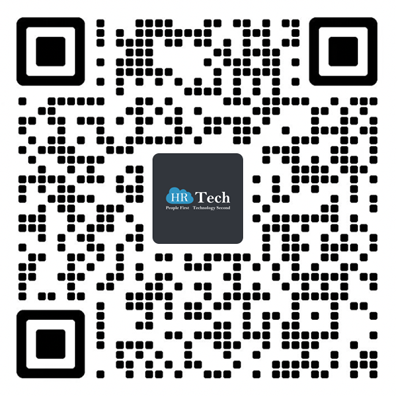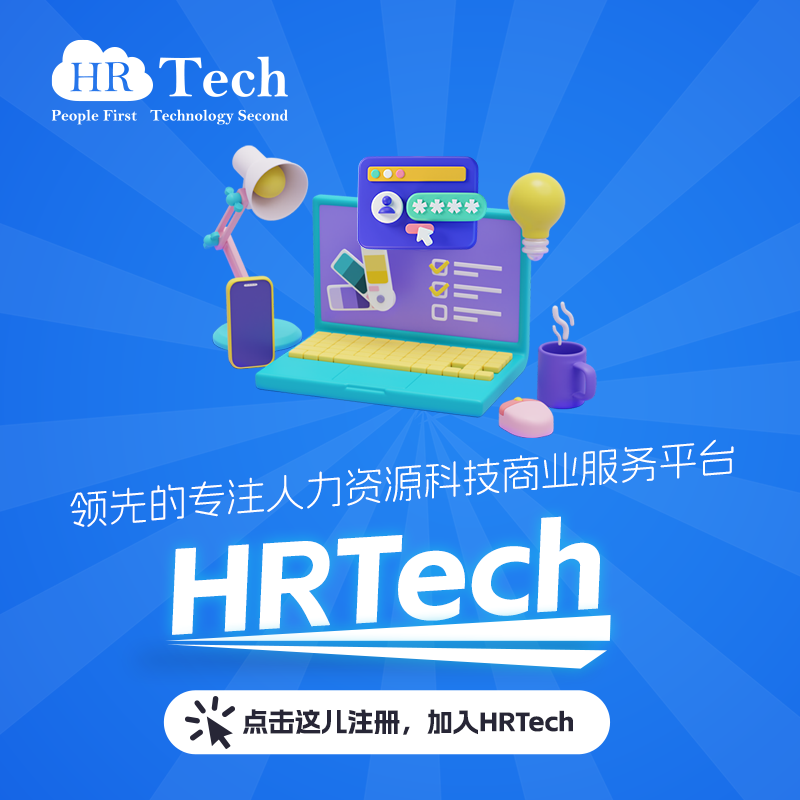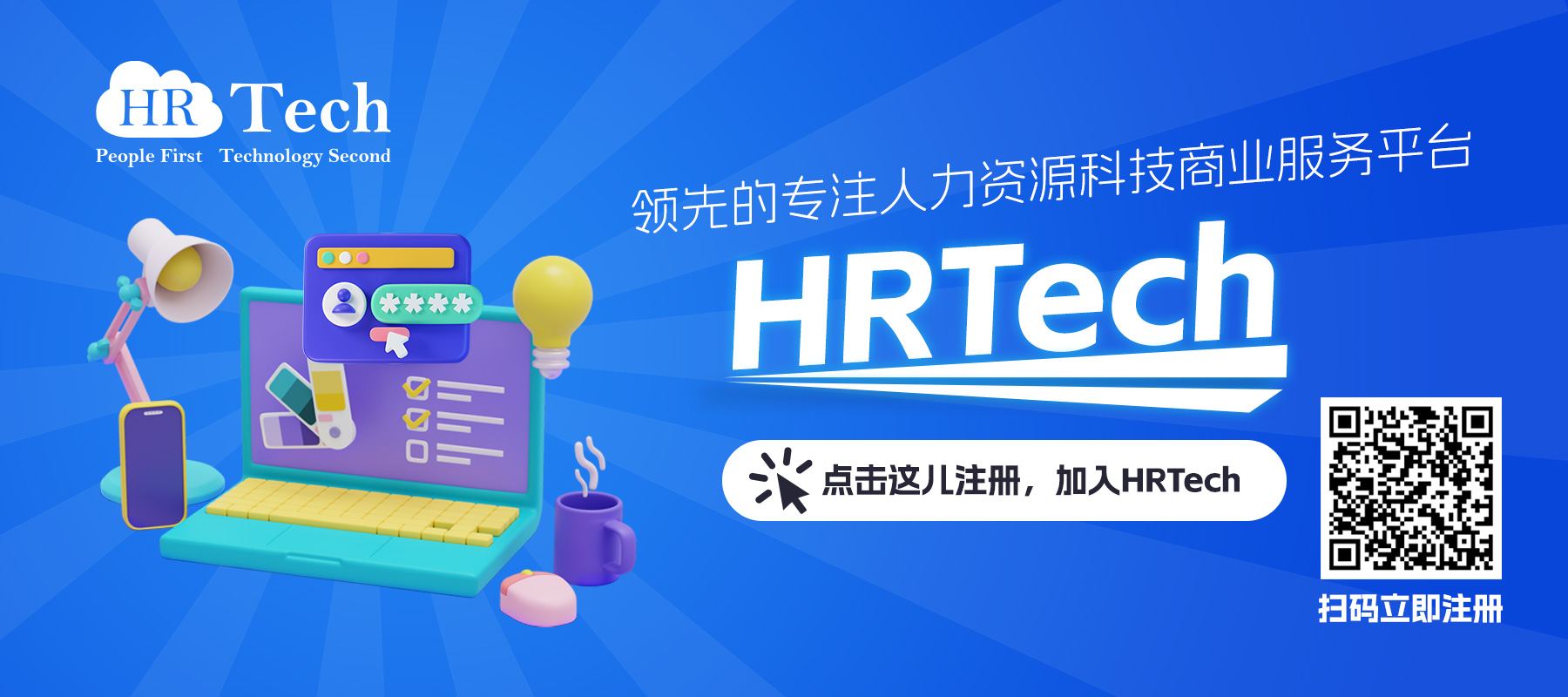-
 资讯
资讯
软件服务和支付解决方案提供商Momentive Software收购学习管理软件服务提供商Blue Sky eLearn,以加强面向任务驱动型组织的学习管理解决方案组合
Momentive Software公司(前身为Community Brands公司,是为目标驱动型组织提供基于云的软件、服务和支付解决方案的领先供应商)宣布收购Blue Sky eLearn公司,后者是学习管理软件和服务的领先供应商,能够帮助组织推进其使命并为专业人士创造有意义的学习机会。这是 Momentive 公司在新品牌形象下的首次收购,并强化了公司投资技术以推动创新并为使命驱动型客户创造更多价值的承诺。
有效提供培训和认证是许多协会的核心使命。随着协会越来越多地寻求增强员工能力、为会员提供有影响力的内容和成功的学习参与体验的方法,学习管理系统现在在推动任务增长方面发挥着比以往任何时候都更为重要的作用。
通过此次收购,Momentive Software兑现了其承诺,即通过业内唯一的端到端业务运营平台为协会和非营利组织提供更多价值,该平台可增强会员管理和捐赠者参与度,实现业务流程自动化和简化,并增加收入和资金,从而产生更大的社区影响。收购 Blue Sky eLearn 是公司进一步加强其学习管理解决方案深度的又一举措,可为客户提供创建和支持学习内容的必要工具,从而提高学习者的学习成绩,增加会员参与度,并增强其使命发展能力。
“Momentive Software 公司首席执行官 Mike Henricks 说:"我们更加专注于我们的解决方案组合如何应对组织所面临的独特挑战,这些组织的使命是在他们所服务的社区内产生更大的影响。Momentive软件公司首席执行官Mike Henricks说:"今天的声明加强了Momentive对技术和业务投资的承诺,以推动创新,为我们的客户和合作伙伴创造更多价值。我们非常欢迎Blue Sky eLearn团队加入Momentive,并渴望继续提供Blue Sky客户和合作伙伴所期待的创新技术和卓越支持。
目前,全球 400 个组织的 300 多万用户利用蓝天 eLearn 的 Path LMS 云学习平台,利用教育计划和虚拟活动促进受众学习、进步和合作,从而实现组织使命。此次收购推动了 Momentive 为增强其端到端解决方案组合所做的努力,旨在帮助以使命为导向的组织最大限度地发挥其社区影响力。
“蓝天 eLearn 首席执行官 Philip G. Forte 表示:"我们很高兴能加入 Momentive 软件公司大家庭,并将我们的技术和专业知识添加到他们的综合解决方案套件中。“蓝天 eLearn 首席执行官 Philip G Forte 说:"与 Momentive 携手,我们可以为客户和合作伙伴创造新的机会,支持他们提供在促进任务扩展方面发挥关键作用的基本知识。
交易条款未披露。Sherrard Roe Voigt & Harbison, PLC(田纳西州纳什维尔)在此次交易中担任 Momentive Software 的法律顾问。
关于 Momentive Software
Momentive Software 为全球 30 多个国家的 30,000 多家以目标为导向的组织扩大影响力。以使命为导向的组织和协会依靠公司基于云的软件和服务来解决其最关键的挑战:吸引服务对象、简化运营和增加收入。我们的解决方案套件以可靠性为核心,以活动、职业、筹款、财务和运营为战略重点,我们的共同目标是服务于使我们的社区成为更美好生活场所的组织。
-
 资讯
资讯
印度AI蓝领招聘平台Vahan.ai获得Persol Group投资,增强其AI技术
印度领先的人工智能蓝领招聘平台 Vahan.ai 已获得总部位于日本东京的亚太地区著名人力资源服务提供商 Persol Group 的投资。这一战略合作伙伴关系与 Persol 集团扩大其在印度市场的业务范围的目标相一致,印度的经济正在显著增长。
凭借这笔投资,Vahan.ai 旨在扩大其业务规模,重点关注制造业和零售业等新兴行业,并继续加强其尖端的人工智能技术,以满足雇主和工人不断变化的需求。2024 年 9 月早些时候,Vahan.ai 在由 Khosla Ventures 领投,Y Combinator、美国风险投资公司 Gaingel 和印度科技企业家、Paytm 创始人 Vijay Shekhar Sharma 等跟投的 B 轮融资中筹集了 1000 万美元。
制造业是 Viksit Bharat@2047 愿景的重要支柱,预计将从占印度国内生产总值(GDP)的 15%增长到 25%以上,增加 3200 亿美元的总附加值(GVA)。同时,零售业预计将从 2019 年的 7790 亿美元增长到 2032 年的超过 2 万亿美元,其中仅电子商务就将以每年 11.45% 的速度增长,到 2029 年达到 910 亿美元,而快速消费品行业预计到 2027 年将达到约 6160 亿美元。
为了抓住这些增长趋势,Vahan.ai 还将投资推进其人工智能技术。目前,Vahan.ai 的 AI Recruiter 可以用英语和印地语进行面试,并计划在明年内支持八种主要印度语言和多种方言,从而使该平台更具可访问性和包容性。
Vahan.ai 首席执行官兼创始人Madhav Krishna先生在谈到此次合作时表示:"印度的零工经济正处于显著转型的风口浪尖,较小的城市和新兴行业推动了对零工的需求激增。预计在这些地区,仅快速商务对劳动力的需求就会翻一番,为数百万人创造就业机会,改善他们的生活。通过将我们的人工智能驱动解决方案与Persol Group 在劳动力管理方面的深厚专业知识相结合,我们的目标是扩大我们的技术规模,扩展到新的行业,并创建一个更具包容性和更高效的就业生态系统。这项合作使我们能够改变招聘实践,并在我们共同努力建设印度的过程中,增强工人和雇主的能力。
2024 年,Vahan.ai 取得了令人瞩目的里程碑式成就,巩固了其作为印度最大的快速商务行业招聘平台的地位。该平台在 920 个城市为 Zomato、Swiggy、Flipkart、Zepto、Blinkit、亚马逊、Rapido 和 Uber 等领先公司提供了 260 万个工作岗位。通过其人工智能招聘器,Vahan.ai 为招聘人员节省了超过 20,000 个小时的人力,大大提高了雇主的招聘效率。有了目前的投资,Vahan.ai 计划进一步扩大其影响力,并专注于开发能增强印度招聘生态系统的技术。
Persol Group 合伙人兼亚太区投资主管 Shingo Ishida 说:“我们很高兴能与 Vahan.ai 合作,它的创新技术和先进业务运营以深刻的市场洞察力为驱动力,与我们在印度的更广泛战略完美契合。Vahan 的主代理平台旨在利用人工智能驱动的解决方案,彻底改变人才招聘和劳动力管理。通过此次合作,PERSOL 集团将支持 Vahan 扩展业务范围,帮助印度企业更高效地获取技术人才。
-
 资讯
资讯
人才智能驱动:人力资源技术的革新之旅
随着劳动力结构的不断变化,人力资源领导者面临着越来越大的压力,他们需要优化招聘战略、加强劳动力规划并推动长期留住员工。要实现这些目标,需要的不仅仅是直觉,还需要从数据中获得可操作的洞察力。这就是人才智能成为改变游戏规则的解决方案的原因所在。
人才智能利用通常由人工智能驱动的数据分析,提供内部和外部人才库的整体视图。它能让人力资源专业人员深入了解市场趋势、最有效的候选人来源渠道以及员工积极性、能力和参与度背后的关键驱动因素。有了这些情报,领导者就可以积极主动地解决技能差距问题,预测未来的人才需求,并使其劳动力战略与总体业务目标保持一致。
然而,尽管 72% 的组织增加了对人才智能的投资,但只有一小部分组织充分了解人才智能的潜力以及该领域的供应商生态系统。这一差距凸显了对清晰、准确定义和有针对性教育的迫切需求,以最大限度地提高人才智能平台的投资回报率。
在企业努力应对不断变化的工作动态和留住人才的挑战时,人才智能不仅仅是一种工具,更是一种战略需要。在本文中,我们将探讨人才智能如何彻底改变人力资源技术,并改变企业吸引、管理和留住顶尖人才的方式。
人才智能的崛起
人才智能已迅速成为人力资源技术中最具变革性的组成部分之一,它的兴起绝非偶然。在当今充满活力的商业环境中,企业面临着迅速适应变化的巨大压力。根据 Aptitude Research 的调查,62% 的公司已经取消或计划在未来一年取消职位。此外,65%的公司已经发现了重大的技能缺口,90%的公司已经引入了新的职位,以满足不断变化的业务需求。
这些变化凸显了以技能为导向的人才管理方法的日益重要性。随着企业越来越依赖正确的技能来应对混乱局面,人力资源领导者开始转向人才智能,以便更有效地量化和分析人才需求。通过利用这种数据驱动型资源,企业可以对其员工队伍中的现有技能获得可操作的洞察力,从而做出更明智的战略决策,与当前和未来的业务目标保持一致。
人才智能为企业提供了更好地管理人才、弥补技能差距和优化劳动力规划所需的清晰度。随着各行各业不断发生变革,利用这些洞察力已成为保持竞争优势的关键。
人才智能平台改变招聘和留任的主要方式
人才智能平台将传统的人力资源流程转变为数据驱动的战略运营,从而彻底改变了招聘和留住人才的方式。
确定候选人是否合适
招聘决策失误的代价可能是巨大的。人才智能平台通过深入评估候选人的适合度来降低这种风险。这些工具不局限于简历,而是分析来自测评、在线档案和行为洞察的数据,以评估个性特征、文化契合度和角色适合度。
有了这些全面的数据,企业就能做出明智的招聘决策,选择不仅符合技能要求,而且符合公司文化和长期目标的候选人。这种方法可确保应聘者被安排在与其优势相符的岗位上,从而促进职业成长并降低人员流动率。
发现技能差距
人才智能平台擅长识别和解决员工队伍中的技能差距。通过详细的技能评估和能力映射,这些工具可以为员工建立档案,并将他们当前的能力与其职位要求进行比较。
通过比较,可以发现需要改进的地方,从而有针对性地开展培训和发展活动。能力制图还能帮助企业确定特定岗位的基本技能,确保团队始终具备应对当前和未来挑战的能力。
为提高技能计划提供依据
为了保持竞争力,企业必须优先考虑持续学习和提高技能。人才智能平台可根据绩效数据、职业抱负和新兴行业趋势,为员工设计个性化的学习路径,从而促进这一目标的实现。
这些平台会推荐相关培训课程、监控参与水平并衡量进展情况,以确保技能提升工作取得切实成果。此外,人才智能还能帮助企业识别高潜力员工,并使其与继任计划保持一致,从而为满足未来的领导力需求做好准备。
提高员工参与度
员工参与对于留住人才至关重要,而人才智能平台在促进员工参与方面发挥着关键作用。通过为员工建立胜任能力档案,这些工具可将个人与符合其技能和兴趣的内部机会相匹配。
这种方法鼓励了职业流动性和个人成长,提高了工作满意度,降低了人员流失率。员工知道自己的职业发展得到了组织的积极支持,从而感受到自己的价值和动力。
人才智能为何对组织成功至关重要
传统上,人才职能被分为两个不同的支柱:人才招聘和人才管理。通常情况下,组织会优先考虑人才招聘,而将人才管理视为次要。然而,在当今动荡不安、竞争激烈的人才环境中,这种划分方法已不再有效。公司的顶尖人才正在流失到竞争对手手中,而招聘有技能的候选人也变得越来越具有挑战性。
为了保持竞争力,企业必须采取更加综合的人才战略--人才招聘和人才管理不是各自为政,而是相互配合。人才智能通过将内部员工数据与外部人才库的洞察力相结合,提供了这种统一的视角。这种全面的视角使企业能够规划当前的人才需求,同时预测未来的劳动力需求,确保长期的成功和灵活性。
人才智能的数据来源
人才智能由从各种来源收集的数据驱动,提供内部和外部人才库的全面视图。以下五个数据源是为人才智能提供信息的关键:
招聘平台
求职者的求职之旅通常从招聘平台开始,并在平台上获取初始数据。人工智能辅助解决方案可以通过分析候选人在职业和社交网络中的个人资料、简历、面试互动、录用通知和历史参与情况,进一步丰富这些数据。
背景验证
背景验证报告可提供有关候选人过去角色、薪酬、工作职责和雇主关系的重要见解。这些数据对于提供与特定角色相关的经历和期望尤为有用。
核心人力资源解决方案
核心人力资源平台(人力资本管理或 HCM 系统)提供大量内部人才数据。其中包括薪资信息、绩效指标、在组织内的任期、晋升历史、离职数据以及离职面谈的见解。这些数据对于了解员工的工作轨迹和发现潜在的技能差距至关重要。
招聘网站和聚合网站
Glassdoor 等招聘网站和聚合平台提供了宝贵的劳动力市场洞察,如薪资基准、职位描述、招聘趋势和竞争对手评论。除了量化数据外,这些平台还能深入了解申请特定职位的候选人类型,帮助企业完善职位描述,并加强信息发布,以吸引更多候选人。
应聘者跟踪系统和员工网络
求职者跟踪系统(ATS)和内部员工网络可收集与组织已有联系的求职者数据。这些信息可用于扩大人才渠道,特别是通过多样化的候选人来源和在组织网络内发掘新的机会。
通过智能平台利用人才数据
这些来源提供的大量数据具有巨大的潜力。人才智能平台(如 SeekOut)可以汇总和分析这些信息,为候选人和员工的整个生命周期提供可行的见解。
人工智能驱动的人才智能平台使招聘人员能够超越传统的招聘任务,将他们的角色提升为战略人才顾问。通过整合多个数据源,这些平台可为人才团队提供全面的视图,从而指导招聘决策并制定劳动力规划战略。
此外,人才智能平台还能深入了解现有员工的绩效、参与度和满意度,从而帮助他们发展。这种以数据为导向的方法支持内部流动性计划,使企业能够将人才发展与业务目标相结合,并促进员工的长期留用。
-
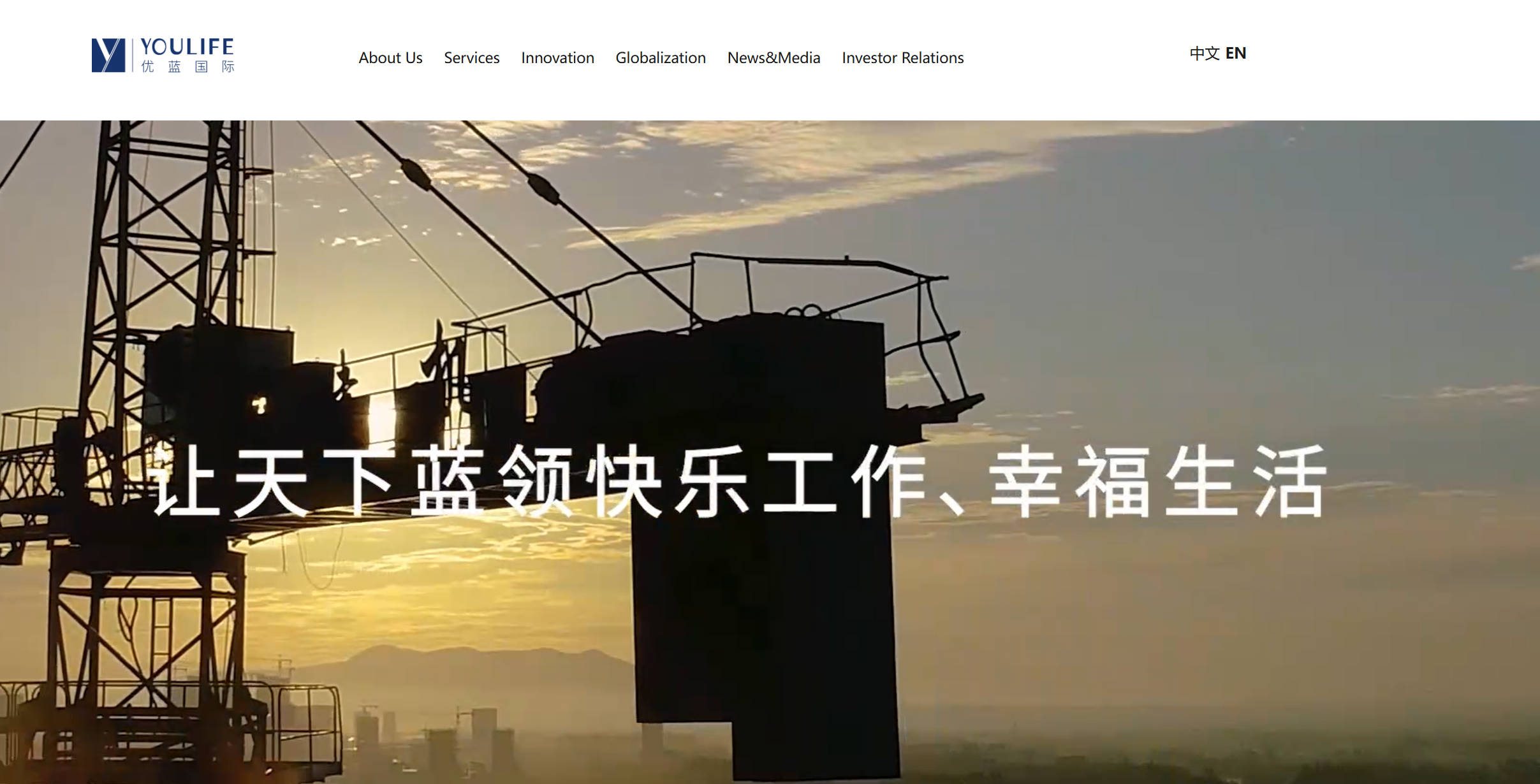 资讯
资讯
中国蓝领人才领导者优蓝国际获证监会批准赴美上市,蓝领终身服务平台迎资本新机遇
2月6日,中国证监会正式批准优蓝国际控股股份有限公司(Youlife International Holdings Inc.)通过SPAC合并方式在美国纳斯达克上市,成为Youlife Group Inc.(YOUL),并计划发行最多15,667,670股普通股。
2月6日,中国证监会正式发布《优蓝国际控股股份有限公司境外发行上市备案通知书》,确认优蓝国际(Youlife International Holdings Inc.)获批通过 SPAC合并 方式在 美国纳斯达克证券交易所 上市。公司将通过与 Distoken Acquisition Corporation(DIST.US) 合并,成为新的上市主体 Youlife Group Inc.(股票代码:YOUL),并同步发行最多 15,667,670股普通股。
此次备案的获得,标志着优蓝国际正式迈向全球资本市场。根据公告,若优蓝国际在 12个月内未完成上市,则需重新提交备案材料。此外,优蓝国际在境外上市过程中需严格遵守境内外法规,并在上市 15个工作日内向中国证监会提交上市情况报告。
蓝领终身服务市场加速扩张,优蓝国际迎资本新机遇
优蓝国际成立于2014年,专注于蓝领人才职业成长,提供覆盖 职业教育、人才招聘、雇员管理及市场服务 在内的一站式蓝领终身服务。公司曾于2022年尝试在港股IPO,但最终选择SPAC模式赴美上市,以加快上市进程、拓展国际资本布局。
根据灼识咨询数据,按 2021年蓝领终身服务收入 计算,优蓝国际为 中国市场排名第一 的蓝领终身服务平台。蓝领市场服务行业整体增长迅速,预计2026年市场规模将达到 人民币6,744亿元,年复合增长率 15.9%。
当前,中国 职业教育市场 也在高速扩张,2021年市场规模 人民币7,094亿元,预计2026年将增至 人民币11,621亿元,年复合增长率 10.4%。面对市场红利,优蓝国际的业务布局具有长期增长潜力。
财务数据与挑战:成长中的蓝领科技服务平台
尽管优蓝国际在蓝领终身服务市场占据领先地位,但近年来财务表现仍面临挑战。从财务数据来看:
2019-2021年,公司收入从 人民币6.65亿元 增至 人民币7.38亿元,但仍处于亏损状态。
2021年亏损2.21亿元,2022年上半年亏损1.18亿元。
毛利率提升,从2019年的 0.4% 增长至2022年上半年的 24.2%。
亏损的背后,优蓝国际在职业教育、OMO招聘(线上线下结合)等领域的持续投入,是公司发展战略的一部分。公司已建立 23所职业学校、1所自营学校、37个专业共建项目及9所技能培训学校,覆盖全国 16个省份、46个城市,致力于培养高技能蓝领人才。
SPAC上市能否助力优蓝国际新一轮增长?
优蓝国际选择 SPAC(特殊目的收购公司) 方式上市,意味着能够 绕过传统IPO冗长审核流程,加快融资和上市速度。而此次合并的 Distoken Acquisition Corporation,截至2月6日市值 3,741万美元,交易完成后,优蓝国际将以新的 Youlife Group Inc. 身份继续在纳斯达克运营。
未来,优蓝国际能否借助上市契机扩大国际化布局,并进一步优化盈利能力,仍有待市场检验。但可以肯定的是,随着 中国蓝领职业教育与就业市场需求不断增长,优蓝国际正站在风口之上,迎接资本市场的新挑战与机遇。
HRTech将持续关注优蓝国际上市进展,为您带来更多蓝领科技行业最新动态。
附录:
优蓝国际(Youlife International Holdings Inc.)是一家中国领先的蓝领终身服务平台,成立于2014年,总部位于上海。公司主要提供职业教育、人才招聘、雇员管理和市场服务,旨在帮助蓝领人才提升技能,实现职业发展。
2022年12月,优蓝国际曾向香港交易所递交上市申请,计划在港交所主板上市。然而,未能成功。随后,公司转向美国市场,与特殊目的收购公司(SPAC)Distoken Acquisition Corporation达成合并协议,计划通过SPAC在美国纳斯达克证券交易所上市,股票代码为“YOUL”。
FUTUBULL
2024年5月20日,优蓝国际与Distoken宣布已就拟议的业务合并达成最终合并协议,预计合并后的公司将在纳斯达克挂牌上市。
IYIOU
2025年2月6日,中国证监会发布《关于Youlife International Holdings Inc.(优蓝国际控股股份有限公司)境外发行上市备案通知书》,批准优蓝国际赴美上市。证监会要求公司补充说明关于员工持股计划和股权激励等事项。
SINA FINANCE
目前,优蓝国际正积极推进与Distoken的合并事宜,预计合并完成后将在纳斯达克证券交易所上市。公司计划通过此次上市进一步扩大业务规模,提升品牌影响力。
-
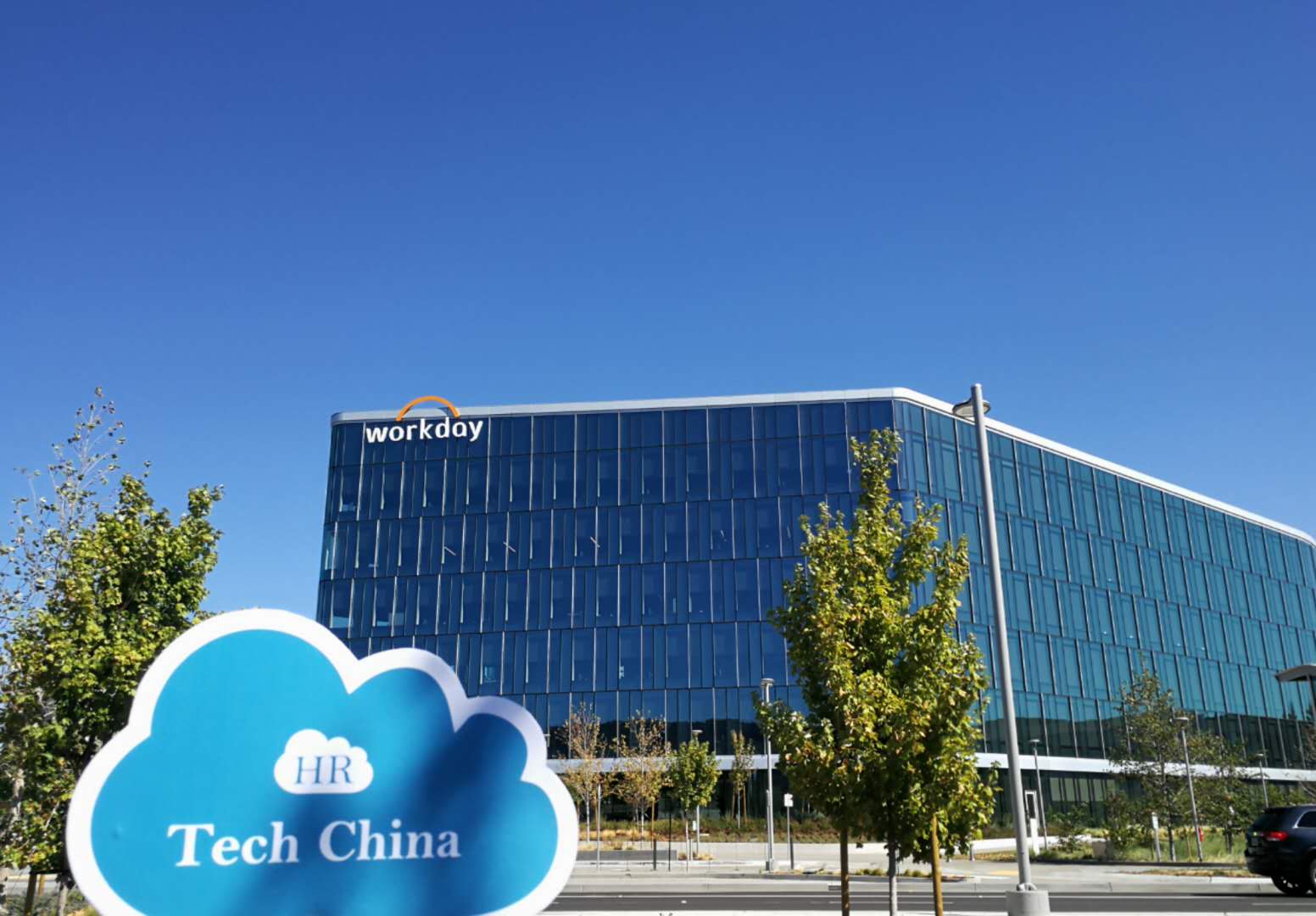 资讯
资讯
突发:Workday宣布裁员1750人,优化业务运营,股价暴涨6.3%
Workday(纳斯达克:WDAY)宣布裁员1,750人,占其员工总数的8.5%,以提升运营效率,聚焦核心业务和创新领域。尽管裁员,公司仍计划在关键战略领域继续招聘,并退出部分自有办公空间。该重组计划预计成本在2.3亿至2.7亿美元之间,其中包括1.45亿至1.75亿美元用于遣散费、员工福利等,5,000万至6,000万美元的非现金股权补偿费用,以及3,500万美元的办公空间减值费用。Workday预计,2025财年第四季度的GAAP营业利润率将比非GAAP营业利润率低22%-23%。
尽管如此,受市场对成本优化举措的积极解读,Workday股价在周三盘后暴涨6.3%。
2025年2月5日 – 硅谷 – 企业软件提供商 Workday(NASDAQ: WDAY) 宣布将裁员 1,750人,约占其全球员工总数的 8.5%,以提升运营效率并聚焦核心业务。
此次裁员是公司战略调整的一部分,旨在适应不断变化的市场环境,优化资源配置,并加强在核心业务领域和创新方向的投入。尽管Workday将减少整体员工规模,但公司仍计划在关键战略领域和地区继续招聘,以确保未来业务的可持续增长。
裁员计划的财务影响
Workday预计,此次重组将导致 2.3亿至2.7亿美元 的相关费用,其中:
1.45亿至1.75亿美元 将用于 遣散费、员工福利和相关补偿,涉及未来现金支出。
5,000万至6,000万美元 为 基于股票的非现金补偿费用。
3,500万美元 为 办公空间减值损失的非现金费用,预计将在2026财年第一季度确认。
此外,Workday计划退出部分 自有办公空间,这一举措符合科技行业在后疫情时代对办公资源进行优化调整的趋势。
对公司财务表现的影响
Workday预计,2025财年第四季度GAAP营业利润率 将比 非GAAP营业利润率低22%-23%,全年财报也将受到类似影响。
尽管此次裁员涉及大规模调整,市场对Workday的战略优化举措表示认可。公司股价在周三盘前交易中上涨4%,显示投资者对其长期运营效率提升的信心。
Workday未来发展方向
虽然此次裁员对公司短期运营带来一定挑战,但Workday表示,将继续推进创新和业务增长,通过资源优化和战略性招聘,加强在企业财务及人力资源软件市场的竞争力。
在当前全球科技行业面临经济不确定性的大环境下,Workday的裁员计划反映出行业内企业正通过成本优化和战略性人员调整来确保未来的稳定增长。
-
 资讯
资讯
【投融资1月月报】2025年1月全球人力资源科技投融资简报!
2025年伊始,全球人力资源科技HRTech领域迎来了新的发展机遇与挑战,在刚刚过去的1月,HRTech共报道了9起投融资事件,总金额近1.7亿美元。与去年同期相比,这一数字显得尤为引人注目——2024年1月,HRTech共报道了26起投融资新闻,总金额高达5亿美元。尽管今年1月的投融资事件数量和金额有所减少,但这些事件依然反映了行业在特定领域的聚焦与突破。
从本月HRTech投融资报道领域来看,重心板块以招聘平台、AI平台为主。这表明市场对数字化招聘和人工智能技术的高度关注。在融资轮次方面,1月共报道了3起种子轮融资事件,3起A轮融资事件,1起天使轮融资事件,其余2起投融资事件未披露融资轮次。这些数据不仅展示了不同阶段企业的融资需求,也反映出投资机构对早期和成长期项目的持续关注。接下来,让我们深入探讨1月份这些值得关注的融资事件。
OnPay
融资金额:超1亿美元
融资轮次:未披露
领投人: Carrick Capital Partners
OnPay 是一家薪资福利解决方案平台,为全美 25,000 多家中小企业提供薪资、人力资源和福利解决方案。
Maki
融资金额:2860万美元
融资轮次:A轮
领投人:Blossom Capital
Maki旨在为招聘人员和应聘者创造一种现代化的招聘方式,它以对话式人工智能代理的形式开发了人工智能驱动的技能测试、数据和分析工具,这些工具没有偏见,可以帮助招聘人员专注于应聘者的实际能力--不再需要 “陈旧 ”的简历,能够更快地评估应聘者。
Truewind
融资金额:1300万美元
融资轮次:A轮
领投人:Rho Capital 、 Thomson Reuters Ventures
Truewind 是一家由 AI 提供支持的数字员工会计师,从不睡觉,从不生病,并且始终在工作。完全可预测的容量规划。
RoboForce
融资金额:1000万美元
融资轮次:种子轮
领投人:Myron Scholes、Gary Rieschel、Carnegie Mellon University
RoboForce是一家人工智能机器人初创公司,正在开发世界上最先进的机器人劳动力系统,拥有世界上第一个也是唯一一个精度为1毫米的人工智能专家模型。
Teal
融资金额:750万美元
融资轮次:A轮
领投人:CityLight Capital、Flybridge
Teal是一家AI驱动的职业平台,Teal旨在缩小企业与员工职业资源之间的差距,致力于成为每位专业人士的职业伴侣。
Final Round AI
融资金额:688万美元
融资轮次:种子轮
领投人:Uncork Capital
Final Round AI是一家改变人们求职方式的人工智能平台,Final Round AI 的使命是成为“现代招聘行业的罗宾汉”,让职业转型更快、更智能、更公平。
Holly
融资金额:220万美元
融资轮次:种子轮
领投人: J2 Ventures
Holly是一家政府招聘现代化AI平台,通过其人工智能平台加速政府招聘并使之现代化,改造过时的系统,为数百万公共部门职位提供招聘服务。
MeetGate
融资金额:25万美元
融资轮次:未披露
领投人: 未披露
MeetGate为企业提供快速、准确识别最佳候选人所需的工具和洞察力,帮助企业打造卓越团队。
Alumni Staffing
融资金额:未披露
融资轮次:未披露
领投人:Harvest Ascend
Alumni Staffing是一家总部位于新泽西州布里奇沃特的临时工公司。Alumni一直将诚信、响应速度和交付能力放在运营的首位。客户和应聘者都在寻求一个可靠的临时雇员合作伙伴,以满足他们各自的需求。
本月全球人力资源领域的投融资事件较去年同期相比减少了65%。(2024年1月HRTech共报道了26起投融资新闻,融资总金额达5亿美元)
关于HRTech
HRTech核心报道中国人力资源科技创新企业及产品信息,关注并实时分享全球的人力资源科技资讯。同时,以原创角度独家报道人力资源科技公司和创业公司;每月关注并独家发布人力资源科技投融资数据及报告,业已成为人力资源科技领域创业者以及行业精英获取全球人力资源科技行业资讯和动态的主要渠道。
-
 资讯
资讯
建筑薪资平台Trayd获得450万美元种子轮融资,满足了建筑业薪资解决方案不断增长的需求
Traid是一个开创性的建筑薪资平台,它宣布获得450万美元的股权融资,这反映了主要客户对该平台的早期采用和日益增长的需求。萨福克建筑公司(Suffolk Construction)的风险投资子公司萨福克技术公司(Suffolk Technologies)在彭博贝塔公司(Bloomberg Beta)和 Y Combinator 的支持下主导了种子轮融资。新资金将推动产品开发、团队扩张和规模扩大,以满足市场需求。
尽管建筑业是一个价值约 2,000,000 美元的行业,但美国的贸易承包商仍然依赖于纸质签到表、Excel 调度以及多个孤立的平台来满足他们的薪资和会计需求--所有这些都无法解决当今建筑商所面临的复杂挑战。Trayd 的综合平台通过自动化繁琐的日常任务(如员工入职、现场考勤卡采集、薪资覆盖)以及集中关键项目和劳动力数据,直接解决了这些难题。一体化的后台平台提供薪资、日程安排、现场跟踪、人力资源和会计工具,发掘每年 100 多亿美元的市场机会。
“我们非常高兴地宣布这一里程碑事件。Trayd 是同类产品中的首个平台,每天,我都有幸看到承包商们终于看到了专为他们打造的软件。联合创始人兼首席执行官安娜-伯杰(Anna Berger)说:"对于这些建筑商来说,Traid 消除了重复的系统,使他们能够专注于手头的工作,同时保持合规。“在我们前进的道路上,倾听客户的声音并解决他们最迫切的问题将继续是我们的核心使命。
伯杰出生于一个建筑世家,在父亲的办公室工作时,她亲眼目睹了后台效率低下的问题。看到多个系统导致工资单等必需品出错的影响,Berger 设计了 Trayd,为下一代专业承包商简化工资单处理和合规管理。
“萨福克公司董事长兼首席执行官 John Fish 说:"当我们的贸易合作伙伴以最高效率运作时,整个建筑生态系统就会得到提升,使我们的项目团队能够更好、更智能地进行建设。“我们非常高兴地欢迎 Trayd 加入萨福克技术公司的产品组合,并支持他们为专业承包商简化薪资合规性和后台运营的创新方法。Trayd 正在帮助推动建筑行业的发展,使其重要参与者能够专注于他们最擅长的领域--建设未来。
本轮融资推动了 Trayd 为建筑后台推出高需求功能、壮大软件工程团队以及为全国更多客户提供服务的计划。
关于Trayd
Trayd 由联合创始人兼首席技术官 Cara Kessler 创立,为复杂的工会薪资和认证薪资报告提供服务,使各种规模的承包商都能参与大型联邦资助项目。公司已经获得了工会客户的青睐,如为美国东北部提供服务的拥有 600 名员工的干墙承包商 Century Drywall。同时,该平台强大的附带福利计算和现行工资优先权使其成为非工会承包商的有效解决方案。Trayd 简化了管理高周转劳动力的操作,为这个高压、低利润的行业创造了更多机会。
-
 资讯
资讯
【美国】AI驱动的租赁平台Tandem获得610万美元种子轮融资,以缓解重返办公室的压力
Tandem宣布获得 610 万美元的种子基金,以改变公司发现、租赁和管理办公空间的方式。这笔资金(包括 2023 年募集的 75 万美元预种子资金)进一步加速了公司的使命,即实现快速、灵活、无摩擦的办公室租赁,为各种规模的团队提供拎包即可入住的办公室。
“Tandem 首席执行官拉菲-桑兹(Rafi Sands)说:"在这个‘回归办公室’(Return to Office)不断占据头条新闻的时代,我们正在从根本上重新构想办公室租赁。“我们的技术让寻找和租赁优质办公空间变得像预订 Airbnb 一样简单。
传统的办公室搜索可能需要 3-6 个月,而 Tandem 的平台只需 14 天或更短时间即可完成。这个由人工智能驱动的市场简化了整个租赁流程,包括从参观到签约、保险、租金支付和门禁控制等所有环节。该平台使公司能够在提前 30 天通知的情况下扩大或缩小空间,在动态的工作环境中提供前所未有的灵活性。
自 2023 年秋末推出以来,Tandem 已迅速发展壮大,帮助 300 多家公司在旧金山和纽约两个市场寻找、租赁和共享办公空间,其中包括 Writer AI 和 Norm AI 等快速发展的科技公司,每年处理的租金超过 600 万美元。该公司被 Y Combinator 的 2024 年夏季批次录取,此后已为数十个 Y Combinator 团队提供支持,帮助他们找到理想的办公空间。
目前,大多数美国公司都以兼职方式使用办公空间,空间更小、租期更短已成为常态。超过 90% 的 Tandem 客户认为租赁期限长短是其购买办公室决策中最重要的三个因素之一。
通过简化租赁流程,Tandem 的平台将租赁空间的时间缩短了 90%。更简便、更快捷的流程意味着更低的交易成本,使业主能够提供租期少于 24 个月的现成空间。由于没有预付费用和快速入住时间,房东终于有办法为当今市场提供有竞争力的服务。
本轮 610 万美元的融资由 Collide Capital、1984 Ventures 和 Y Combinator 领投,斯坦福大学的 Nick Bloom 等知名天使投资人也提供了支持。这笔资金将用于继续开发 Tandem 的自动租赁技术。该平台就像一个超级经纪人,能够以闪电般的速度推荐空间、安排参观、起草租赁文件并协调入住事宜。
关于Tandem
Tandem 是一个人工智能驱动的市场,可简化整个租赁流程,包括从参观到签约、保险、租金支付和门禁控制等所有环节。公司只需提前 30 天通知,就能通过该平台扩大或缩小办公空间,为动态的工作环境提供灵活性。
-
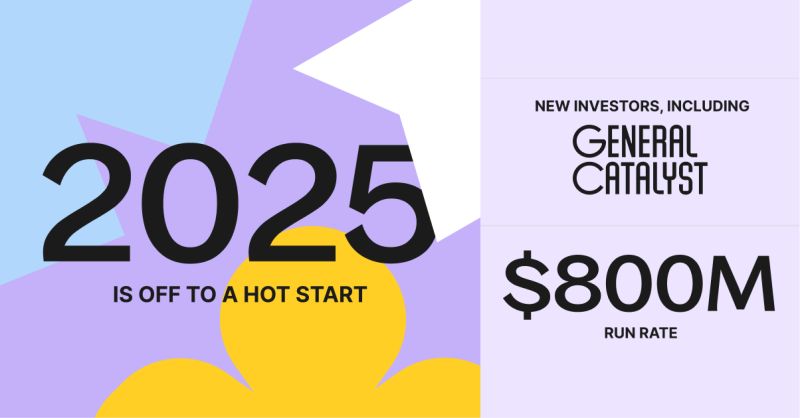 资讯
资讯
Deel迎来3亿美元的股份交易,新投资者入局,收购早期投资者股票,2024年Deel营收运行率达8亿美元
全球薪资和人力资源管理平台Deel宣布,General Catalyst和某主权投资基金已从早期投资者手中购买3亿美元的公司股份,这并非新融资,而是二级市场交易,体现出新投资人对Deel长期增长的信心。与此同时,Deel 2024年底的营收运行率(Run-Rate)已达8亿美元,同比增长70%,并已连续盈利超过两年。
【美国时间2025年2月4日】 全球薪资与人力资源管理平台Deel宣布,General Catalyst和某主权投资基金已从早期投资者手中收购近3亿美元的公司股份。此次交易为二级市场交易,并非新融资,反映了新投资者对Deel业务增长与长期发展的坚定信心。
与此同时,Deel披露了最新业绩数据,截至2024年12月,公司营收运行率(Run-Rate)已达8亿美元,同比增长70%,且已连续盈利超过两年,进一步巩固了其在全球HR科技领域的领先地位。
Deel:从初创公司到全球HR管理领导者
自2019年从Y Combinator孵化以来,Deel已从最初的招聘平台,发展为覆盖150多个国家的全栈人力资源管理系统,提供HRIS(人力资源信息系统)、薪资、合规、福利、绩效管理、IT资产管理等一站式企业级解决方案。
此次交易的新投资者General Catalyst早在Deel早期阶段便已支持该公司,如今通过收购早期投资者股份加深投资,彰显了对Deel业务增长和全球化战略的认可。
General Catalyst董事总经理兼La Famiglia创始合伙人Jeannette zu Fürstenberg表示:“Deel是一家变革性的全球HR科技平台,助力全球人才的高效管理,同时推动经济增长。我们从早期阶段就支持Deel,而如今,它已成为一项符合General Catalyst投资理念的成熟业务——帮助更多人就业,同时助推企业更快成长。”
独立董事加入,助力长期战略布局
为进一步优化公司治理,Deel近期新增两位重量级独立董事,为公司未来发展提供战略支持:
Francis deSouza:前Illumina CEO、前迪士尼董事会成员
Todd Ford:Coupa Software联合总裁兼CFO,资深董事会成员
Deel联合创始人兼CEO Alex Bouaziz 表示:“2024年是公司业务、基础设施和产品创新取得巨大突破的一年,我们正在为2025年更强劲的发展做好准备。新投资者的加入进一步增强了我们的信心,我们期待与他们携手,在全球HR管理领域持续创新和扩展。”
Deel的全球影响力持续扩大
作为全球薪资与HR管理领域的独角兽企业,Deel正在不断拓展其影响力。目前,Deel的技术与服务覆盖120多个国家,支持不同类型的雇佣方式,帮助企业高效、合规地管理全球人才,解决跨国薪资、合规、税务等复杂问题。
Deel通过AI驱动的工具和全资拥有的薪资支付基础设施,让全球企业能够更加智能、快速、合规地扩展业务。这一核心竞争力,正是其获得新投资者青睐的关键。
结语:HR科技市场迎来资本持续关注
Deel的这笔3亿美元股份交易,不仅展示了投资者对HR科技市场的持续兴趣,也表明全球薪资与合规管理正在成为企业数字化转型的重要一环。随着越来越多企业布局远程办公与全球化人才管理,类似Deel这样的一体化HR解决方案正迎来高速增长期。
未来,随着HR科技的AI智能化、全球化合规管理的深化,Deel是否能在激烈的市场竞争中继续保持领先地位?HRTech将持续关注,为您带来最新行业动态!
📌 更多HR科技行业动态,请关注HRTech! 🚀
-
 资讯
资讯
【美国】 改变人们求职方式的AI平台Final Round AI获得688万美元超额种子轮融资,以改变求职之旅
改变人们求职方式的人工智能平台 Final Round AI 宣布成功完成 688 万美元的超额种子轮融资。在 Uncork Capital 的支持下,Final Round AI 的使命是成为 “现代招聘行业的罗宾汉”,让职业转换更快、更智能、更公平。加入Uncork的还有HF0、Linear Capital、Ritual Capital、Mento VC、AltaIR Capital、Alumni Ventures、Goodwater、Hico Ventures、Soma Capital、iSeed Ventures、Level One、Sky9 Capital以及硅谷著名的天使投资人。在获得资金的同时,公司还宣布为 2025 年设立一个 800 万美元的奖学金计划基金。
“Final Round AI联合创始人兼首席执行官Michael Guan表示:"此次融资标志着Final Round AI努力重新定义求职过程的一个令人难以置信的里程碑。“Interview Copilot 的成功向我们展示了人工智能创造有意义影响的力量。有了这些支持,我们就有能力改进我们的技术,建立一支世界一流的团队,并在全球范围内扩大我们的影响--帮助个人自信地驾驭不断变化的就业市场。
The Interview Copilot™ 是 Final Round AI 的旗舰创新产品,通过在面试过程中提供由人工智能生成的实时答案和见解,让求职者充满自信并清晰地表达自己的想法。这一革命性的工具为求职者提供了出类拔萃所需的资源,在竞争激烈的招聘环境中创造了公平的竞争环境。
Final Round AI 的使命很明确:利用尖端的人工智能技术,指导求职者完成职业生涯的每一步,帮助他们在 30 天内找到下一个机会。通过提供人工智能原生解决方案,该平台简化了求职搜索,创建了无缝工作流程,并提供个性化见解,使求职成为一种轻松有效的体验。
Final Round AI 将利用种子资金实现三个主要目标:
增强 Interview Copilot™ 和其他产品: 投资技术,完善 Interview Copilot 的实时人工智能功能,确保在面试期间为求职者提供无缝性能和个性化支持。
扩大运营和团队: 建立一支致力于创新和研究的顶级团队,推动人工智能在招聘和录用过程中的应用。
释放新的收入机会: 与人工智能公司和招聘平台建立合作关系,将顶尖人才与工作机会联系起来,创造可扩展、可持续的收入流。
Final Round AI 是求职领域的游戏规则改变者,它利用人工智能为受劳动力变化和自动化影响的个人赋权,“Uncork Capital 合伙人 Tripp Jones 说,”我们很自豪能支持他们的愿景,并为他们的成功感到骄傲。“我们很荣幸能支持他们的愿景,也很高兴看到这个团队将带来的变革性影响。
此次融资正值人工智能和自动化不断重塑行业和重新定义劳动力的关键时刻。在竞争空前激烈的就业市场上,2024 年为求职者揭示了一个残酷的现实:平均需要 247 天和 294 份申请才能获得一个职位。Final Round AI 的平台通过为个人提供面试驾驶员(Interview Copilot)等工具来应对这些挑战,从而在瞬息万变的就业市场中脱颖而出。
“Guan 补充说:"我们的愿景是确保任何正在进行职业转型的人都能获得简化和加速其职业生涯的技术。“Interview CoPilot™ 只是一个开始。这笔资金使我们能够扩大我们的覆盖面和影响力,同时为在快速发展的就业市场中取得长期成功奠定基础。
除了宣布融资之外,Final Round AI 还自豪地推出了 Final Round AI 奖学金计划,这是一项开创性的举措,旨在通过让求职者更容易找到工作、更负担得起来增强他们的能力。在 800 万美元基金的支持下,该计划彰显了公司支持个人实现职业理想的承诺。
该奖学金计划旨在消除 Final Round AI 专业高级会员的经济障碍,当他们使用公司的尖端工具成功找到工作时,公司将 100% 退还会员费。这一举措不仅仅是经济补偿,还体现了公司支持求职者实现职业抱负的使命。
 扫一扫 加微信
hrtechchina
扫一扫 加微信
hrtechchina
 资讯
资讯
 资讯
资讯
 资讯
资讯
 资讯
资讯
 资讯
资讯
 资讯
资讯
 资讯
资讯
 资讯
资讯
 资讯
资讯
 资讯
资讯



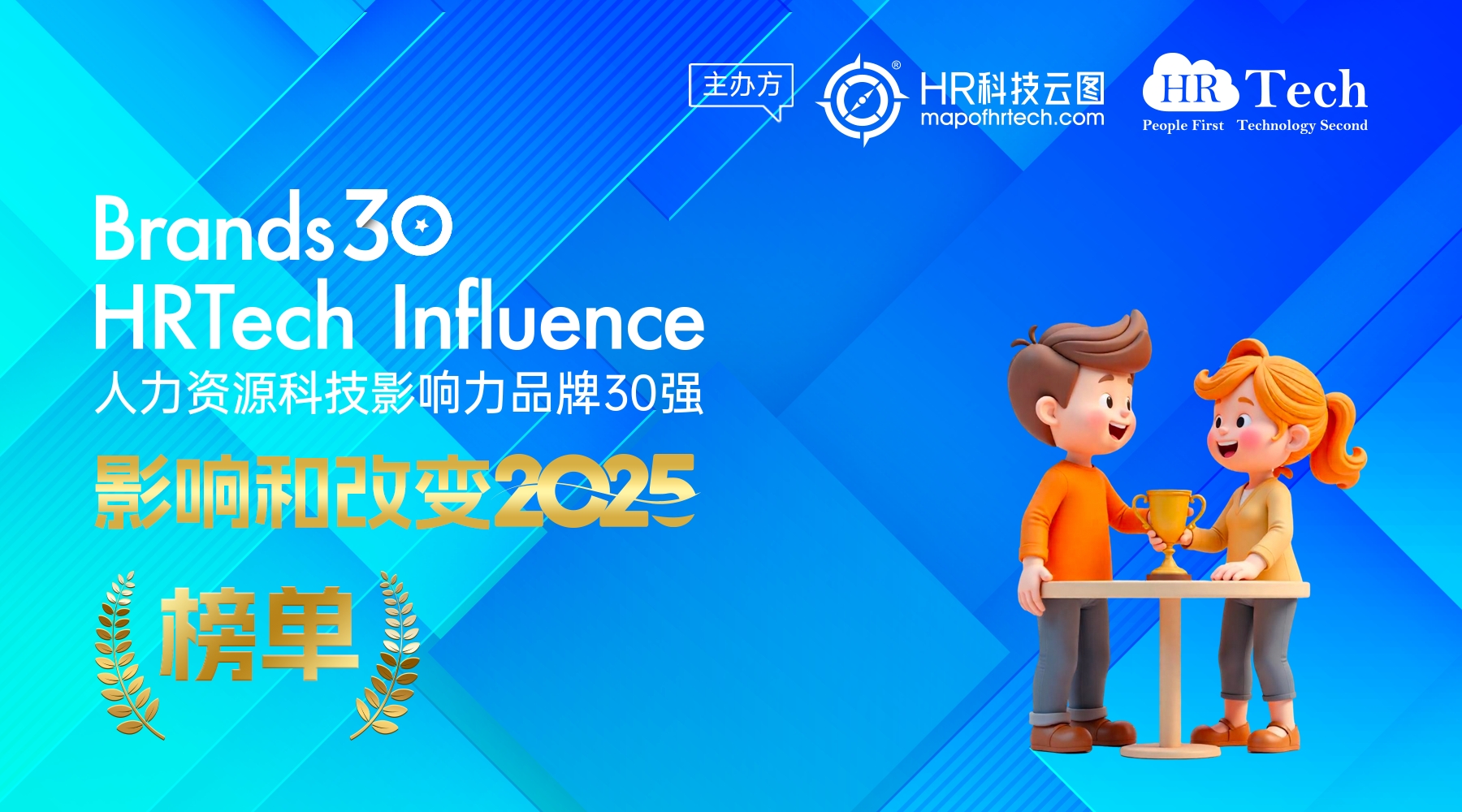
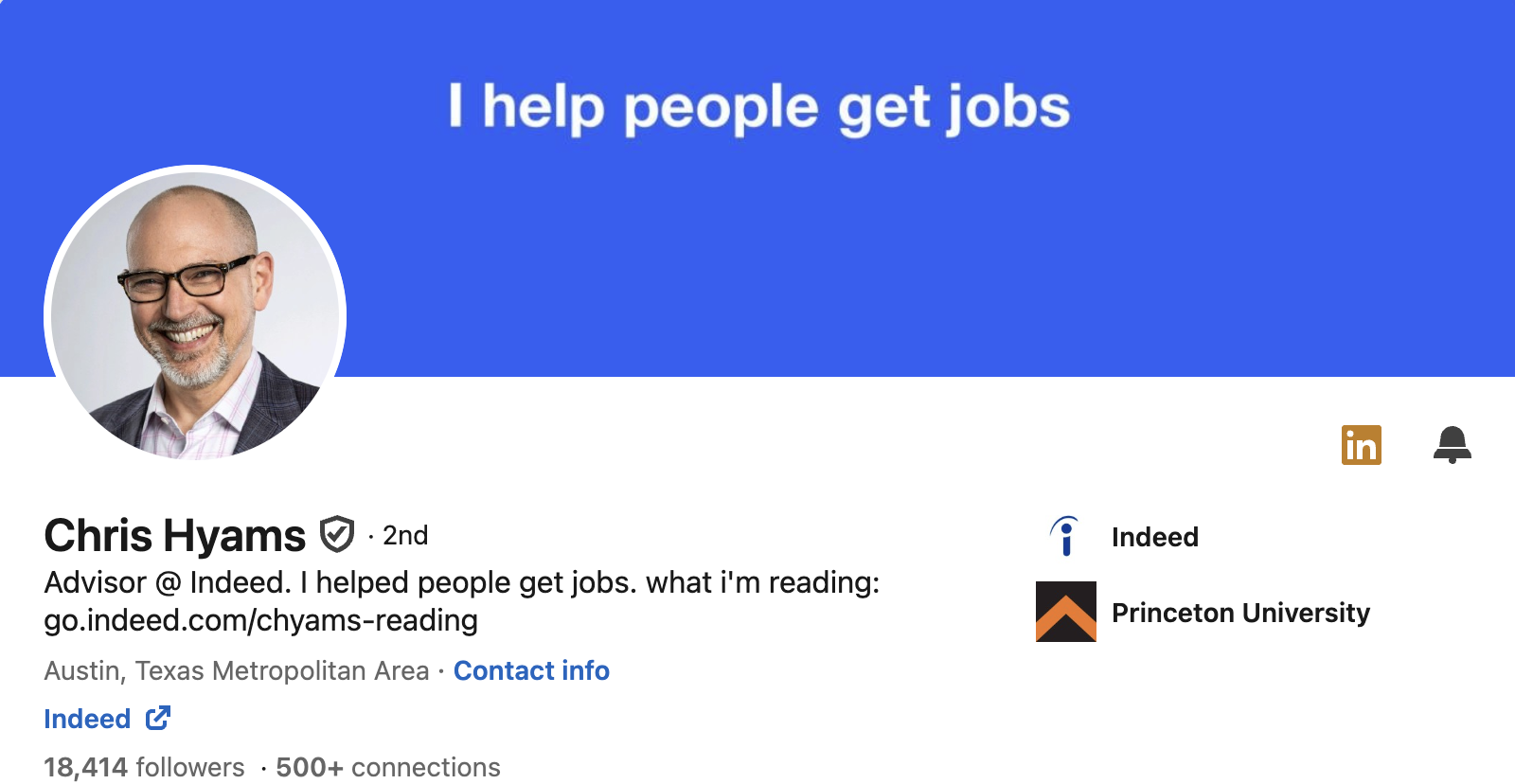
 扫一扫 加微信
hrtechchina
扫一扫 加微信
hrtechchina

